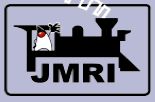 As I reported yesterday, the OOXML appeals brought by Brazil, India, South Africa and Venezuela have been rejected by the Technical Management Board (TMB) and Standardization Management Board (SMB) of ISO and IEC, respectively. I have now received the actual voting results for the IEC vote, and an indecipherable screenshot of the ISO votes. I'll hope to add the ISO votes later on when I get more comprehensible information, but in the meantime, here are the IEC results.
As I reported yesterday, the OOXML appeals brought by Brazil, India, South Africa and Venezuela have been rejected by the Technical Management Board (TMB) and Standardization Management Board (SMB) of ISO and IEC, respectively. I have now received the actual voting results for the IEC vote, and an indecipherable screenshot of the ISO votes. I'll hope to add the ISO votes later on when I get more comprehensible information, but in the meantime, here are the IEC results.
In each case, the questions included in the ballot were the same:
a) Not to process the appeal any further
b) To process one or more of the appeals, which would require setting up of a conciliation panel
For each appeal, a board member could vote "yes," "no" or "abstain," with only the yes and no votes counting for purposes of determining whether or not the vote would pass, and a two-thirds vote being required for passage (the "Conclusion" at the end of the voting results cites clause 10.4, Rules of Procedure, as the reference for these rules).
Update: For the appeal by appeal details of the IEC Board vote, see this blog entry.
 ISO and IEC have announced the rejection of the four appeals submitted by the National Bodies of Brazil, India, South Africa and Venezuela. The rejection follows on the heels of July 9th recommendation of the Secretaries General of each of the two standards organizations to their respective management boards not to give the appeals further consideration.
ISO and IEC have announced the rejection of the four appeals submitted by the National Bodies of Brazil, India, South Africa and Venezuela. The rejection follows on the heels of July 9th recommendation of the Secretaries General of each of the two standards organizations to their respective management boards not to give the appeals further consideration.
Under the ISO rules of process, this now paves the way for the as-adopted version of OOXML, now called IS0/IEC DIS 29500, Information technology - Office Open XML, to proceed to publication. That version is substantially different than the current implementation of OOXML in Office 2007, and its text has still not been publicly released by ISO/IEC. According to a joint press release, "this is expected to take place within the next few weeks on completion of final processing of the document." Intriguingly, the press release goes on to say, "and subject to no further appeals against the decision."
 Today those who believe in free content and free and open source software won a major victory in court, as reported by Larry Lessig, Mark Radcliffe, and Pamela Jones, among others. The underlying facts, and the legal counsel involved, were hardly major figures on the commercial landscape: the open source software at issue - the JAVA Model Railroad Interface - had been developed by the plaintiff, Robert Jacobsen, for model train buffs under an infrequently used free and open source license, and the attorney representing the plaintiff - a solo practicioner in Maryland - was young and inexperienced. But as often happens, a small case between small parties can have huge implications. And decisions that may make good strategic sense to the parties can also have disastrous consequences for those that are not in the same situation.
The case in question is called Jacobsen v. Katzer, and you can read the opinion here (a brief summary of the facts and proceedings to date is here). It's been going on for quite awhile, and a lot of people have spent a lot of time behind the scenes helping make sure that it came out the right way. That said, it hasn't received a lot of attention outside of FOSS legal circles, so for those of you who haven't heard of it before, I'll try to distill briefly why this decision is so important, and why people are so pleased with today's decision.
Today those who believe in free content and free and open source software won a major victory in court, as reported by Larry Lessig, Mark Radcliffe, and Pamela Jones, among others. The underlying facts, and the legal counsel involved, were hardly major figures on the commercial landscape: the open source software at issue - the JAVA Model Railroad Interface - had been developed by the plaintiff, Robert Jacobsen, for model train buffs under an infrequently used free and open source license, and the attorney representing the plaintiff - a solo practicioner in Maryland - was young and inexperienced. But as often happens, a small case between small parties can have huge implications. And decisions that may make good strategic sense to the parties can also have disastrous consequences for those that are not in the same situation.
The case in question is called Jacobsen v. Katzer, and you can read the opinion here (a brief summary of the facts and proceedings to date is here). It's been going on for quite awhile, and a lot of people have spent a lot of time behind the scenes helping make sure that it came out the right way. That said, it hasn't received a lot of attention outside of FOSS legal circles, so for those of you who haven't heard of it before, I'll try to distill briefly why this decision is so important, and why people are so pleased with today's decision.
 The latest edition of Linux World ground to a halt in San Francisco today. I made it into town just last night for a VIP party hosted by the Linux Foundation, where I caught up with lots of true believer friends (developers, journalists and corporate supporters), and for the Board meeting today. I never made it to this year's show, though, opting instead to arrive early only to head back out of town for a few days of hiking in the hills south of town.
The latest edition of Linux World ground to a halt in San Francisco today. I made it into town just last night for a VIP party hosted by the Linux Foundation, where I caught up with lots of true believer friends (developers, journalists and corporate supporters), and for the Board meeting today. I never made it to this year's show, though, opting instead to arrive early only to head back out of town for a few days of hiking in the hills south of town.
Or at least, that was the plan. But as it happened, the best I could manage was a few hiking escapes sandwiched between inconveniently scheduled conference calls, thrashing out some IPR issues holding up the formation of an interesting and unusual consortium I'll look forward to writing about post-launch. The LF board meeting today was productive, though (a highlight was a walk around the Linux Developers Network Site we brought live today, as well as the new Linux Application Checkerkiller development tool. that Steven J. Vaughn-Nichols immediately pronounced "make ISVs and other programmers start to love developing for Linux."
But to return to the show: some things never change, it's true, but some of those things that never change do so in ways that are fresher than others. Linux World, for example, was Linux World, or so I heard from all that attended. I tried to scan the agenda, and on a fast connection it took forever to load, what with all the dynamic content and fancy graphics. This year, it seemed, people felt let down, as if the show wasn't delivering the action any more, but just, well, droned on.
But on my way back from the Board dinner, and across the street from where I was staying (Hotel Nikko - full stereo in the room, and a New York Times waiting outside the door every morning - how civilized is that?), I was reassured to find that at least the alfresco, evergreen street scene of San Francisco remains reliably mutable and alive.
 Ever since Steve Jobs addressed the adoring crowds at this year's Apple Worldwide Developers Conference, the press, Apple fans - and most especially, Apple investors - have been concerned over the state of his health. The reasons are obvious: Five years ago, Jobs announced that he had been diagnosed, and cured, of a rare and happily less pernicious form of pancreatic cancer (the more common variety is almost never discovered before it has become incurable). And, when Jobs took the stage this June, he was far thinner and more haggard than he had ever looked before.
Ever since Steve Jobs addressed the adoring crowds at this year's Apple Worldwide Developers Conference, the press, Apple fans - and most especially, Apple investors - have been concerned over the state of his health. The reasons are obvious: Five years ago, Jobs announced that he had been diagnosed, and cured, of a rare and happily less pernicious form of pancreatic cancer (the more common variety is almost never discovered before it has become incurable). And, when Jobs took the stage this June, he was far thinner and more haggard than he had ever looked before.
Since then, although rumors have swirled, Apple has refused to state whether or not Jobs has had a recurrence of his cancer - or disclose any meaningful details at all. Even on calls with securities analysts, Apple's response has only been that "Steve's health is a private matter."
Thus you might think that if you were a journalist, and you got a call from Steve Jobs yourself, giving you, and you only, the private scoop on the status of his health, you might feel like a pretty lucky guy, and take that news to the public within whatever constraints you had agreed to with the Apple CEO. Or would you write a different story entirely, and bury that news in the penultimate paragraph of a long story, and write at length instead about how stockholders were entitled to know the news that you had just buried?
With that lead in, you can guess which way New York Times business page columnist Joe Nocera called the coin toss. So here's the good news about Steve Jobs (up front), and the bad news about a Journalistic decision.

Back in December of last year, Google posted a brief announcement of a new experiment in online publishing. At first blush it seemed to represent a challenge to the Wikipedia - but with a few differences. Google summarized the concept as follows:
Earlier this week, we started inviting a selected group of people to try a new, free tool that we are calling "knol", which stands for a unit of knowledge. Our goal is to encourage people who know a particular subject to write an authoritative article about it. The tool is still in development and this is just the first phase of testing. For now, using it is by invitation only. But we wanted to share with everyone the basic premises and goals behind this project.
Then the project dropped out of sight, while the chosen authors contributed initial content, and while Google decided whether to green light the project for ongoing support and public participation
This Wednesday, Google lifted the password curtain on its infant knol site, and issued a new announcement. In some respects, the description of the knol game plan (and even the words) are identical to what we read in the original blog entry. In others, they are different, apparently reflecting lessons learned and author feedback received during the intervening seven months. And, of course, there is now the nascent site itself to browse and watch evolve as well.
What you'll see when you visit turns out to be quite different from the Wikipedia - at least for now. Given that until yesterday it was neither available to public feedback nor open to volunteer authors desiring to launch their own knols, what it looks like today will almost certainly be very different from what it looks like a year from now, or perhaps even in month from now. With the door now open to anyone that wants to walk in and the freedom to go in any direction - not to mention ad revenues to be reaped and shared with authors - what we will see will be akin to the Apple App Store for the everyman and woman - not just for developers, but for anyone who can type.
Here's my take on what to expect, how the knol experiment may evolve, and why I think it matters - a lot.
At any one time I'm usually helping set up anywhere from two to five new standards consortia and open source foundations, and the gestational stealth period can be anywhere from two to eight months. That's because the time will vary depending on how much time it takes to work everything out among the founders and recruit the type of starter set of members that you'd like to have to give an impression of inevitability to whatever it is that the founders are trying to make happen in the wider world. As a result, it's always a pleasure to help introduce a new organization that has just emerged onto the public stage, and particularly so when the new consortium's mission is socially relevant.
That's the case with the Alliance for Sustainable Air Transportation, whose mission will ultimately effect just about everyone that reads this blog entry. In a nutshell, ASAT will help US airports, in cooperation with those around the world, make the move to a next generation air traffic control system that will increase safety, decrease congestion, and lower fuel consumption - three goals that certainly anyone would endorse. You can find ASAT's Web site here, and I've pasted the full text of a press release issued last week in at the end of this blog entry.
Here are further details on what this new organization is all about.
Updated: A story on a press event was posted at a Chinese site (in Chinese) on July 22. I've run it through the Babelfish translator, and you can get the gist of the story at this page. I am told by someone local that the story summarizes a high-level meeting at the EIOffice, with representatives of both SAC (the standards National Body for China) and CESI, as well as representatives from many other government agencies, all there to recognize the release of the first office suite to fully support UOF. The story also reports on various agencies that have announced that they will be converting to the new EIOffice 2009 product.
Long time followers of the ODF-OOXML story will recall that there is a third editable, XML-based document format in the race to create the documentary record of history. That contender is called UOF - for Uniform Office Format, and it has been under development in China since 2002, although I first heard and wrote about it back in November of 2006. Last summer, UOF was adopted as a Chinese National Standard, and last Friday the first complete office suite based upon UOF was released. It's called Evermore Integrated Office 2009 (EIOffice 2009 for short), and here's the story.
Although I'm a little late doing so, I'd like to add my voice to Amanda McPherson's in welcoming Brian Proffitt to the Linux Foundation. Amanda is the Linux Foundation's Vice President, Marketing and Developer Programs, and posted the official welcome on Thursday at the Linux Foundation Web site here.
As I expect just about every reader of this blog knows, Brian has been the Managing Editor of LinuxToday for quite a few years (as well as Managing Editor of various other Jupiter Media properties: LinuxPlanet, Enterprise Linux Today, AllLinuxDevices, LinuxPR, and JustLinux). If you missed it, you can find Brian's farewell column at LinuxToday here. As he disclosed there, his new role will be to help launch the Linux Foundation's new Linux Developer Network site and project, which Amanda has been already been working on for some time. When it launches, Brian will be its Community Manager and Editor. After almost 8 years at JupiterMedia, there are few people that know every part of the Linux landscape, and those that live, develop and write (both positively and negatively) in and around that landscape as well as Brian. We're both lucky and delighted to have Brian aboard.
I'm particularly happy that I'll be able to continue to work with Brian, as he has been a great friend to me here, linking to hundreds of my blog entries over the last several years. It's fair to say that many of you would never have learned of this blog but for Brian's deciding that what I was writing here might be of interest to the Linux community. I am quite appropriately grateful for his willingness to pull what I had to say out of the fire hose of information that he had to deal with on a daily basis.
I think that what Brian will be doing at the Linux Foundation will be of interest to you, so here are some of the details on what you can expect from Brian and the Linux Developer Network in the near future.
Last night someone sent me a copy of a document delivered by the CEOs of ISO and IEC earlier that day to the ISO Technical Management Board (TMB). That documents summarizes the four appeals filed in relation to the adoption of DIS 29500 (OOXML), and provides a response to each claimed basis for appeal. Those appeals, you will recall, were registered by the National Bodies of South Africa, India, Venezuela and Brazil, not all of which have became publicly available. Under the Directives, the next step in the Appeals process is for the TMB to vote on each appeal, with each member being entitled to vote yes, no or abstain on one or the other of the following resolutions, in each case as to each appeal separately:
a) Not to process the appeal further
b) To process one or more of the appeals, which would require setting up of a conciliation panel
If more than one appeal is approved for further consideration, the CEOs recommend that a single panel be formed to address them (I've previously described the ongoing process in greater detail here). The TMB's are asked to vote by August 4.
The recommendation of the CEOs is as follows:
The processing of the ISO/IEC DIS 29500 project has been conducted in conformity with the ISO/IEC JTC 1 Directives, with decisions determined by the votes expressed by the relevant ISO and IEC national bodies under their own responsibility, and consequently, for the reasons mentioned above, the appeals should not be process further.
Those who have been disappointed by how the Fast Track process was conducted will also be disappointed by the reasoning they will find in the document, which can be effectively be summarized as follows:
 As I reported yesterday, the OOXML appeals brought by Brazil, India, South Africa and Venezuela have been rejected by the Technical Management Board (TMB) and Standardization Management Board (SMB) of ISO and IEC, respectively. I have now received the actual voting results for the IEC vote, and an indecipherable screenshot of the ISO votes. I'll hope to add the ISO votes later on when I get more comprehensible information, but in the meantime, here are the IEC results.
As I reported yesterday, the OOXML appeals brought by Brazil, India, South Africa and Venezuela have been rejected by the Technical Management Board (TMB) and Standardization Management Board (SMB) of ISO and IEC, respectively. I have now received the actual voting results for the IEC vote, and an indecipherable screenshot of the ISO votes. I'll hope to add the ISO votes later on when I get more comprehensible information, but in the meantime, here are the IEC results.  ISO and IEC have announced the rejection of the four appeals submitted by the National Bodies of
ISO and IEC have announced the rejection of the four appeals submitted by the National Bodies of 
 The latest edition of Linux World ground to a halt in San Francisco today. I made it into town just last night for a VIP party hosted by the Linux Foundation, where I caught up with lots of true believer friends (developers, journalists and corporate supporters), and for the Board meeting today. I never made it to this year's show, though, opting instead to arrive early only to head back out of town for a few days of hiking in the hills south of town.
The latest edition of Linux World ground to a halt in San Francisco today. I made it into town just last night for a VIP party hosted by the Linux Foundation, where I caught up with lots of true believer friends (developers, journalists and corporate supporters), and for the Board meeting today. I never made it to this year's show, though, opting instead to arrive early only to head back out of town for a few days of hiking in the hills south of town.
